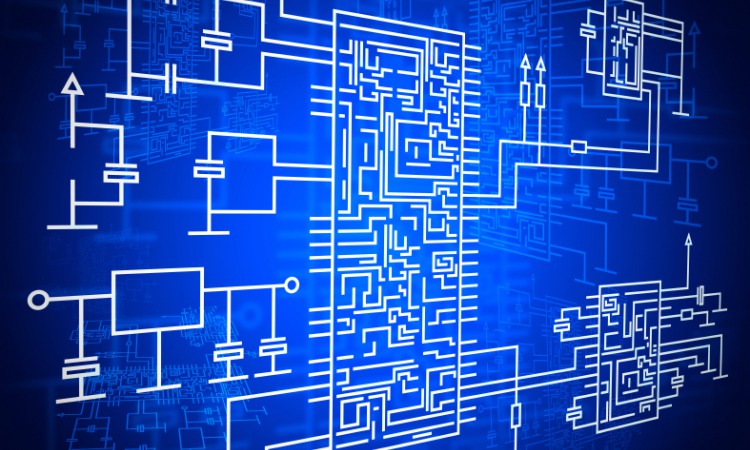Reliable Residential Electrical Design Services for Functional Home Wiring
Reliable Residential Electrical Design Services for Functional Home Wiring
Blog Article
Ingenious Electrical Design Solutions for Modern Facilities
The development of modern framework necessitates innovative electric design solutions that not only enhance functional performance yet additionally address sustainability difficulties. As urban environments grow increasingly complicated, incorporating innovations such as smart grids and renewable resource resources ends up being critical. These developments not only guarantee to optimize power consumption however also foster strength versus future needs. Nonetheless, the landscape of electrical design is undergoing fast transformation, motivating a better assessment of arising fads and their ramifications for lasting framework feasibility. What might the future hold for those that welcome these cutting-edge techniques?
Importance of Cutting-edge Electrical Design
Cutting-edge electrical design plays an essential function in modern-day facilities, influencing not only effectiveness however also sustainability. As cities progress and the need for power rises, the requirement for sophisticated electric systems comes to be extremely important. These systems need to not just satisfy current needs yet additionally prepare for future growth and technical advancements.
A well-executed electrical design can considerably minimize energy consumption, therefore decreasing operational prices and decreasing ecological effect. By incorporating renewable resource resources, such as photovoltaic panels and wind turbines, cutting-edge styles can improve power self-reliance and strength. In addition, wise grid innovations permit real-time tracking and management of power circulation, enhancing performance and reducing waste.
Safety is an additional vital aspect of electric design. Executing rigorous criteria and advanced modern technologies can minimize dangers related to electrical failures, making sure a secure atmosphere for companies and homeowners alike. Additionally, cutting-edge layouts assist in adaptability, enabling infrastructures to integrate emerging modern technologies seamlessly.
Trick Patterns in Electric Design
As the landscape of electrical design remains to develop, numerous key trends are forming the future of the industry. One considerable fad is the assimilation of wise modern technology into electrical systems. The proliferation of the Net of Points (IoT) has allowed real-time surveillance and control of electrical gadgets, boosting performance and facilitating anticipating upkeep.
Another fad is the growing focus on modular design. This strategy allows for scalable and flexible services, allowing framework to adapt to altering requirements without considerable remodellings. Additionally, making use of advanced simulation tools and Structure Information Modeling (BIM) is becoming increasingly prevalent, enhancing the design procedure and boosting cooperation amongst stakeholders.
Additionally, improvements in products science are bring about the growth of lighter, extra long lasting, and energy-efficient elements. This innovation is specifically vital for high-performance structures and infrastructure jobs.
Lastly, there is a marked change towards data-driven decision-making - electrical engineering design services. Leveraging data analytics helps developers enhance systems for efficiency and cost-effectiveness. With each other, these patterns signify a transformative era in electrical design, boosting performance, sustainability, and resilience in modern-day facilities
Sustainable Power Solutions
Lasting power services are increasingly coming to be an important emphasis in electric design, mirroring a more comprehensive commitment to ecological responsibility and source efficiency. These services intend to reduce ecological influence while maximizing energy intake in various frameworks, from residential structures to large industrial facilities.
One of the primary strategies includes the integration of renewable resource resources, such as solar panels and wind turbines, right into electrical systems. This not just reduces reliance on nonrenewable fuel sources yet also improves power resilience. Furthermore, ingenious energy storage space systems, such as innovative batteries, enable effective management and circulation of energy, guaranteeing that excess power produced throughout optimal production can be made use of during high need durations.
Moreover, energy-efficient design practices are being embraced to boost total system performance. This consists of utilizing energy-efficient lighting, HVAC systems, and smart structure innovations that check and adjust energy usage based on occupancy and environmental problems.
Smart Grid Technologies
The execution of lasting power solutions normally brings about the expedition of clever grid innovations, which play a critical function in updating electrical systems. Smart grids leverage advanced communication technologies and data analytics to enhance the dependability, performance, and sustainability of power circulation. By incorporating digital technology with traditional grid infrastructure, these systems facilitate real-time tracking, automated control, and boosted decision-making capacities.
Among the crucial features of wise grids is their capability to accommodate eco-friendly energy resources, such as solar and wind power. This flexibility not just reduces dependency on nonrenewable fuel sources yet additionally enables a more decentralized power manufacturing design. Wise grids enable need response programs, where customers can change their energy usage based on real-time prices, thereby advertising energy conservation and decreasing peak tons needs.
Furthermore, her explanation smart grid technologies enhance grid durability by enabling quicker recognition and resolution of interruptions, inevitably reducing downtime. With anticipating maintenance and analytics, utilities can enhance procedures and enhance service shipment. As cities and communities continue to progress, smart grid innovations are vital for developing a reliable and sustainable electrical framework that meets the needs of contemporary society.

Future-Proofing Framework
To make certain long-lasting feasibility and versatility, future-proofing facilities is essential in the rapidly developing landscape of electrical design solutions. As technology advances and energy needs change, it is critical that electric systems are made with flexibility in mind. This requires incorporating scalable solutions that can accommodate future upgrades without requiring extensive overhauls.

In addition, sustainability should be a keystone of future-proofed styles. Utilizing renewable resource sources, such as solar and wind, and anonymous optimizing power effectiveness minimize dependence on fossil fuels, straightening with worldwide initiatives to battle climate modification.
Verdict
To conclude, innovative electric design solutions play a critical duty fit contemporary framework. By prioritizing effectiveness, versatility, and sustainability, these solutions attend to the evolving demands of power systems. The combination of clever grid modern technologies and sustainable power services boosts durability and reduces operational expenses. Future-proofing framework through sophisticated simulation devices and modular approaches makes sure that electric systems stay receptive to altering demands, inevitably adding to a much more energy-independent and sustainable future.
A well-executed electrical design can significantly decrease power consumption, consequently lowering functional expenses and minimizing ecological impact. By integrating renewable energy resources, such as solar panels and wind generators, innovative designs can enhance energy self-reliance and resilience. In addition, innovative energy storage space systems, such as advanced batteries, enable effective administration and circulation Learn More of power, ensuring that surplus power produced during top manufacturing can be made use of throughout high demand periods.
Smart grids make it possible for need response programs, where customers can readjust their energy use based on real-time pricing, consequently advertising energy conservation and reducing peak tons needs. (electrical engineering design services)
As technology developments and energy demands change, it is critical that electrical systems are created with flexibility in mind.
Report this page